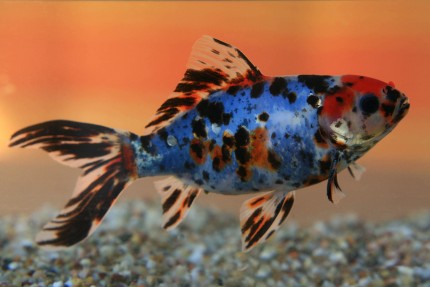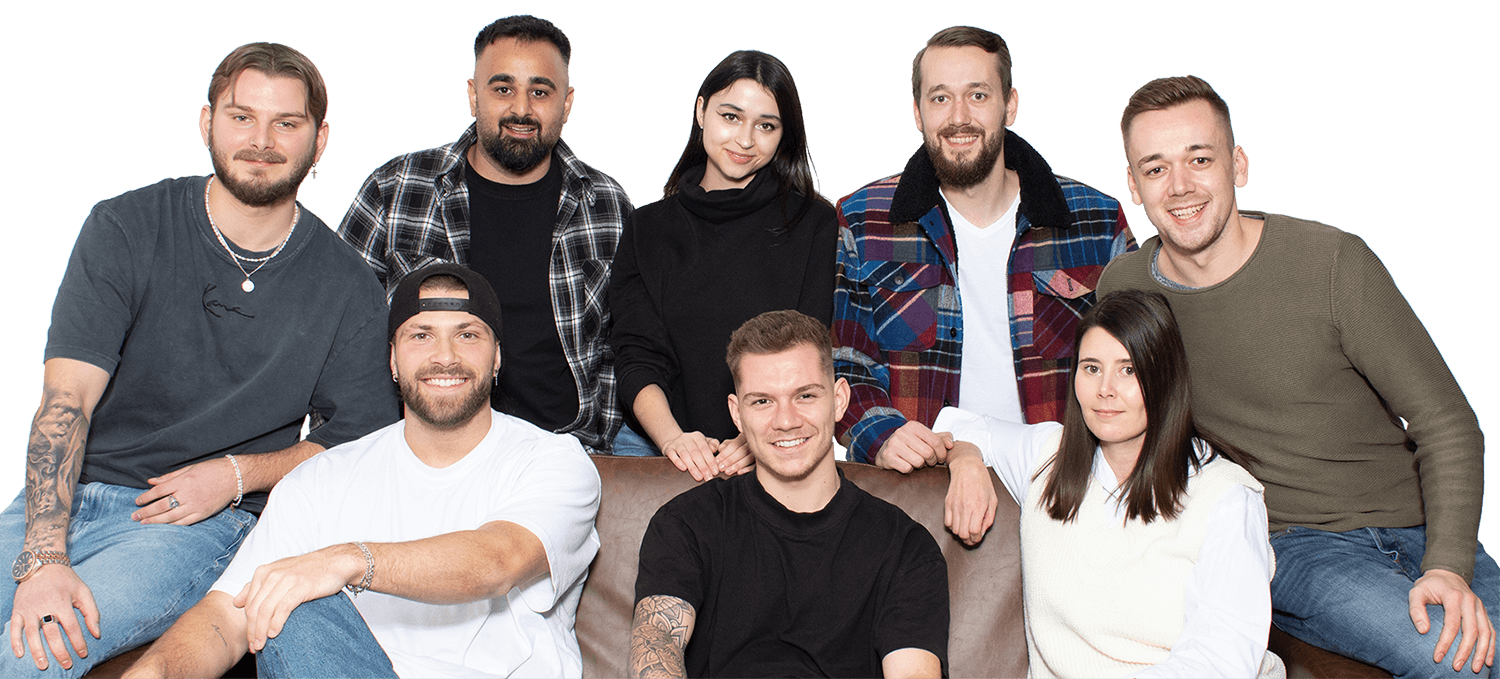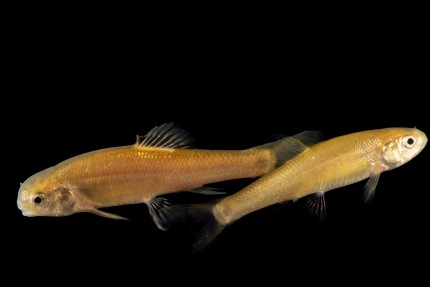Blue orfe - Leuciscus idus - 7-10 cm
incl. VAT plus shipping costs
Immediate delivery, express possible ![]()
More than 20 Articles in stock
Delivery only innh. Germany and Austria possible.
Switch to the German store
- Item no: 11587
Fast delivery times
All products are in stock with us!14 years of breeding experience
Let our team of experts advise you!High customer satisfaction
from over 3,000 reviews "The blue orfe is the bluish to light blue form of the aland, nerf or orfe (Leuciscus idus) and is another color variant along with the golden orfe. The ventral side of the blue orfe is usually silvery bluish to pink, while the back is a darker shade of blue. Orfe are fish from the carp family and are true schooling fish. Blue orfe are well suited for pond keeping, but orfe are also very common in natural waters in our latitudes. Orfe are surface fish and live in rivers and lakes. They like to stay under low-hanging branches of trees and bushes on the shore.
As true schooling fish, blue orfe need the company of at least six or seven conspecifics, they can also be mixed with the golden red color variety golden orfe . A pond volume of 1000 liters per orfe should be used as a lower limit. A good pond planting is possible and increases the oxygen content of the water, which suits the orfe. The blue orfe is quite fond of swimming and sometimes jumps for insects. In summer, an oxydator for the garden pond is a useful addition, as well as a water feature or air pump to improve the air supply and oxygen content in the pond water.
Orf in nature migrate from March to June in swarms to spawn in rather calm river sections, which have little current. There, a female lays around 115,000 eggs. Bluegills reproduce accordingly only in very large garden ponds; spawning does not occur in smaller ponds. Bluegills are fully grown at about six years of age and only then become sexually mature.
On average, bluegills grow to be 30 to 60 centimeters long and weigh up to about 4 kilograms. The young fish of the beautiful blue orfe eat mainly fine zooplankton, which they also search for near the shore. Adult blue orfe, on the other hand, catch and eat insect larvae, smaller snails and crustaceans, fish fry and the spawn of other fish. They are also seen jumping for insects all the time.
Bluegills are very compatible pond fish, conveniently taking care of and selectively eating mosquitoes and mosquito larvae that otherwise breed in the pond water. Bluegills are also effective against excessive reproduction of other pond fish, such as the very prolific goldfish, and reliably regulate the population. The curious blue orfes can even be easily accustomed to hand feeding.
Blueorfen like to have oxygen-rich, clean water in their pond, so a pond filter is a sensible purchase. Water features or an oxydator for garden ponds are also a good addition. Bluegills do not dig through pond mud in search of food, they feed on insect larvae, snails, fish larvae and other zooplankton. A good supplement to feed them is a pond fish food for carnivorous fish, in case the food supply in the pond does run low.
Bluegills overwinter in deeper, frost-protected pond areas of at least 1-1.30 meters deep. The use of an ice freezer or a pond thermostat prevents the surface of the garden pond from freezing over completely and ensures reliable gas exchange and a good oxygen supply in winter for the hibernating pond fish.
Here you buy the sociable bluegills in size 7-10 cm.
Minimum order quantity: 3 animals
Our feed recommendation: Behind the NatureHolic main feed flake is a flake food for all fans of classic fish feeding. Like the main feed granules, the flake version of our NatureHolic main feed is perfectly balanced for all aquarium fish and offers a carefully selected mixture of valuable raw materials in an optimal nutrient composition, with proteins, minerals and trace elements for a complete diet and a long, healthy fish life.
| Scientific name | Leuciscus idus |
| German name: | Blue orfe, blue alpine, blue nerf |
| Difficulty level: | for beginners |
| Origin/Distribution: | Europe |
| Coloration: | Top side grayish blue, ventral side silvery bluish to pinkish |
| Age expectancy | 15-20 years |
| Pond size: | at least 1,000 liters per fish, minimum size for shoal: 6-7 orfs, so at least 6,000 liters |
| Food | Insects, insect larvae, fry, spawn, snails, mussels, pond fish food for insectivores |
| Breeding | only in very large ponds |
| Behavior | diurnal |
| Group size | from six fish |
- Item no: 11587
Entdecke die Garnelio Welt!
Garnelio gehört zu den größten Onlineshops für wirbellose Aquarientiere weltweit.
Viele Artikel gibt es exklusiv nur bei uns im Shop.





















The fields marked with * are required.
I have taken note of the privacy policy.